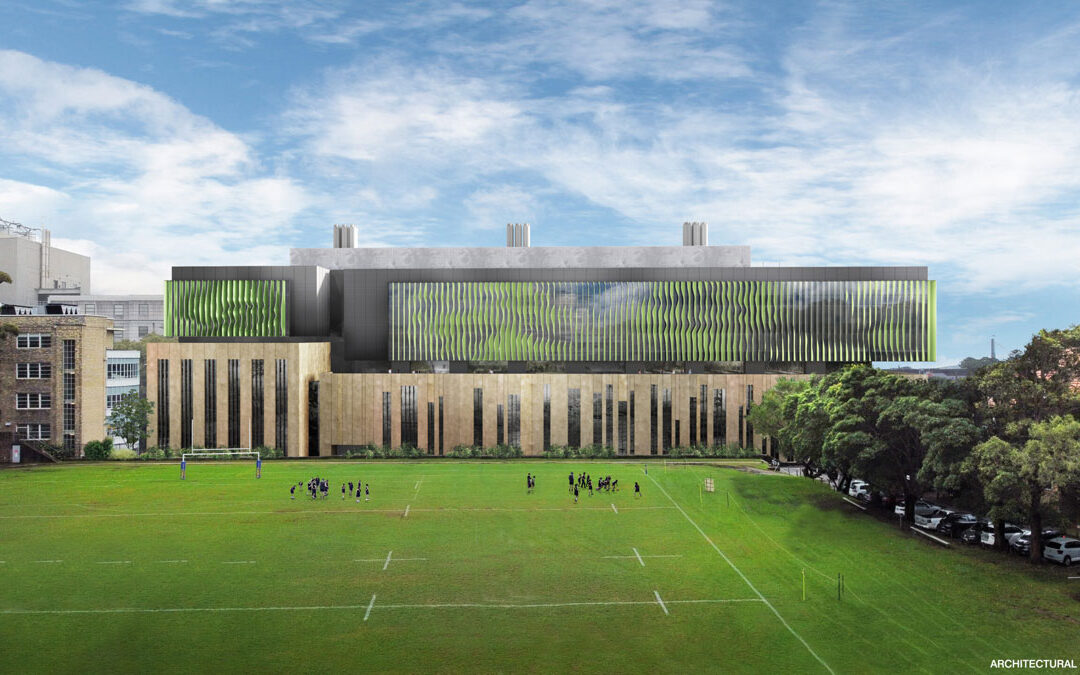The University of Sydney today announced its largest ever capital investment, a landmark $478 million to build a nation leading biomedical precinct to fast-track research and patient care in New South Wales.
The Sydney Biomedical Accelerator (SBA) will create a first-in-Australia, 36,000m2 health, education, and research precinct co-located at Royal Prince Alfred Hospital and the University’s Camperdown campuses, within the Tech Central precinct. The Accelerator will tackle some of our most complex health challenges, including cancer and neurodegenerative diseases and position Sydney as a global leader in biomedical research.
Scientists at the Accelerator will conduct cutting edge research into the building blocks of life, regenerative medicine, drug discovery and medical device development and harness the latest in nanotechnology and gene and stem cell therapy to transform health outcomes in the state.
Vice-Chancellor and President, Professor Mark Scott AO said the investment is a key component of the University’s new 10-year strategic plan.
“This is a historic investment for any University. The range of world-class buildings and facilities that will make up the Sydney Biomedical Accelerator will bring together the brightest scientific and clinical minds with entrepreneurs, industry and government,” Professor Scott said.
“It gives our renowned researchers and partners the infrastructure to take a major step forward in the global quest to find solutions to our biggest health challenges. Together, we have the potential to dramatically improve the future of health and medical care in this country.
“Once the Accelerator is completed, the long-term relationship between our University and the Royal Prince Alfred Hospital will be further strengthened by the physical sharing and linkage of facilities, accelerating the pathway between findings made at a patient’s bedside to the research bench and back again.”
The Vice-Chancellor said the SBA is a partnership between the University, the Sydney Local Health District and the NSW Government, in collaboration with the Centenary Institute.
“This project cements our long-standing partnership with the Sydney Local Health District and we are so thankful for the $143.3 million commitment that the NSW Government announced for this project back in June.”
The Accelerator has been benchmarked against the world’s leading biomedical facilities such as the Karolinska Institutet (50 percent of Sweden’s life science companies in one precinct), the University of Toronto’s MaRS Discovery District and MassBio (life science super-cluster of 1,100 members including Harvard, MIT, Brigham and Women’s Hospital and Boston Children’s Hospital.)
Over 1200 world class biomedical researchers and clinician scientists will be located onsite at the SBA, including over 800 university laboratory researchers and PhD students and 100 industry researchers.
Importantly, work at the SBA and the University’s facilities at Westmead will be mapped together for shared access and collaboration. Capabilities will be designed to seamlessly complement each other across the two sites such as the viral vectors created at Westmead which will be used for gene and cell therapies development at the SBA.
The work will place Sydney at the forefront of global biomedical research, enabling it to attract international talent and fast-track research commercialisation.
Biomedical research and development and commercialisation is a large and growing global market with a current spend of US$235 billion, and growth forecast at 4-5 percent per annum over the next five years.
Unprecedented philanthropic support
Funding for the Sydney Biomedical Accelerator also includes $73 million in philanthropy to the University of Sydney.
A $20 million donation from the Susan and Isaac Wakil Foundation will establish The Isaac Wakil Biomedical Building, one of three buildings that make up the Sydney Biomedical Accelerator complex.
The Isaac Wakil Biomedical Building stands beside and connects to the Susan Wakil Health Building, (not part of SBA) opened in 2021 and also generously supported by a $35 million donation from the Wakils.
University of Sydney Chancellor Belinda Hutchinson AC said, “This $20 million gift to the Sydney Biomedical Accelerator is the latest in one of many transformative donations made by the Susan and Isaac Wakil Foundation to the University of Sydney. These extraordinary philanthropists have now gifted more than $66 million, the largest named donation to a single institution in NSW history, to the University to enhance the future of healthcare and teaching in Australia. We are forever thankful for their vision.”
Isaac Wakil AO said the past two years have shown the vital importance of supporting medical research.
“The Susan and Isaac Wakil Foundation is proud of its long relationship with the University of Sydney and is very pleased to be able to help make this important project a reality. We hope that our initial support encourages further investment in the Sydney Biomedical Accelerator,” said Mr Wakil.
Other support includes a generous bequest to medical research from Dr Marie Knispel, support for a bespoke anatomy and teaching laboratory, and the gift for the Clearbridge Chair in Immunotherapy to support cancer research within the Sydney Biomedical Accelerator.
Architectural design and building commencement
Following a design competition, international architectural firms Denton Corker Marshall and HDR have been selected to design the 36,000m2 integrated health education and research facilities.
Their winning design delivered an internationally recognised facility focused on ‘connectivity.’ It celebrates the relationship between the University of Sydney and Royal Prince Alfred Hospital, and for the first time will establish a physical bridge connecting them.
In the following 12 to 18 months the architects will work with the University, Sydney Local Health District and other stakeholders to workshop and finalise designs.
Early works for the Sydney Biomedical Accelerator will commence this year and initial occupation is expected to occur from 2026.

